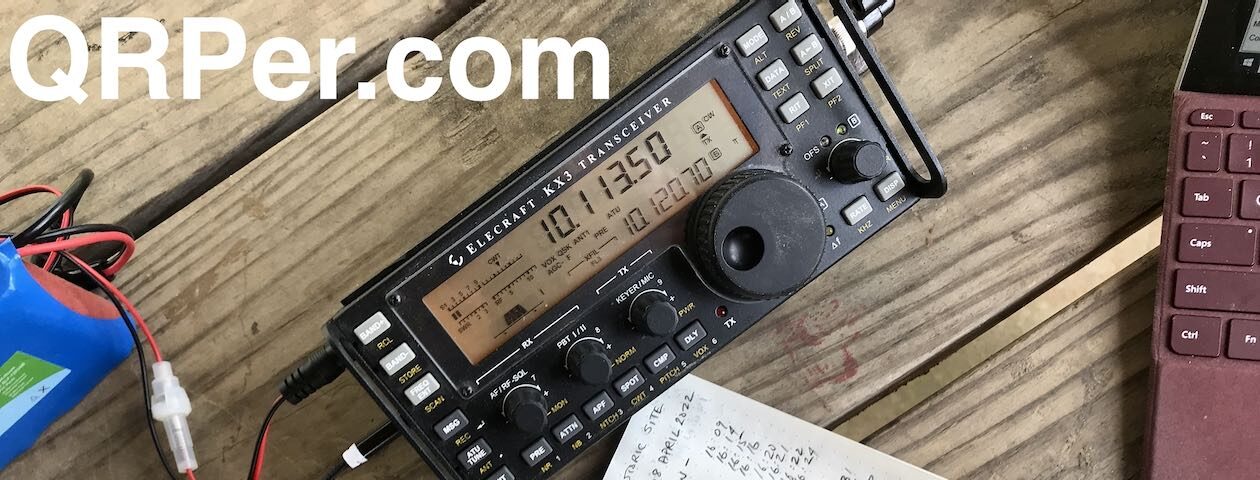 A few weeks ago–on July 12, 2021–I popped by Lake James State Park to do a quick activation with the Icom IC-705. It had been a while since I’d used the ‘705 in the field and the little rig was begging to go outdoors.
A few weeks ago–on July 12, 2021–I popped by Lake James State Park to do a quick activation with the Icom IC-705. It had been a while since I’d used the ‘705 in the field and the little rig was begging to go outdoors.
Here’s the funny part: I completely forgot about that activation! Two days ago, while browsing my photo archive, I noticed the video I made of the activation and, of course, the memory came flooding back.
In my defense, it has been a crazy summer and the weeks/days seem to all blend together in my head.
Thing is, this activation was memorable for a bad reason: QRM (human-made radio noise). It was also memorable for some of the folks I worked on the air.
Lake James State Park (K-2739)
 I arrived at Lake James and was a bit surprised to practically have the place to myself.
I arrived at Lake James and was a bit surprised to practically have the place to myself.
I found a picnic table with a view of the water, deployed my speaker wire antenna, and set up the IC-705. As with all of my activations, I was only running 5 watts.

Gear:
- Icom IC-705
- Mat-Tuner mAT-705Plus
- 28.5 foot speaker wire antenna using one BNC Binding Post Adapter (affiliate link)
- N0SA portable paddles
- GoRuck GR1 USA
- Weaver arborist throw line/weight and storage bag (affiliate links)
- Tom Bihn Large Travel Tray
- Rite In The Rain Weatherproof Cover/Pouch (affiliate link)
- Jovitec 2.0 mm Mechanical Pencil (affiliate link)
- Muji A6 Notepad (affiliate link)
Propagation was–you guessed it–forecast as very poor.
It felt that way when I hopped on 40 meters at first as the band was pretty quiet..
Still, I managed to log 5 contacts on 40 meters (two in SSB, three in CW) before moving up to 20 meters which served me well.
I worked a total of eight stations in nine minutes on 20 meters.
QRM

If you watch the video, you’ll hear how nasty the QRM was at times.
I keep forgetting that there’s a source of intermittent radio interference at the Lake James visitors center. The spot where I set up the station was only 25 meters or so from that building. I believe the center was responsible for the QRM I first experienced during the activation. Whatever the device is generating the QRM, it doesn’t last for long periods of time–it cycles.
The second batch of QRM was emanating from a small boat that pulled up to the dock in front of my site. It was nasty and completely wiped out the 20 meter band. When the owners turned off the boat and stepped onto the dock, the noise stopped completely. Later, when they got back into the boat, the noise started again. I have to assume it was something in their motor causing the QRM. I suspect they may have been using a DC trolling motor.
Memorable contacts
POTA activations often feel like a gathering of friends. I often see many of the same callsigns in my logs and it’s a lot of fun working them each time.
Also, it’s a lot of fun to work stations further afield. At Lake James, I was very pleased to work NK7L in Washington State, IK4IDF in Italy, and HA9RE in Hungary. My back of the envelope calculations tell me that I was pushing 1,000 miles per watt when I worked Elemer (HA9RE). To be clear, all of the work was done on his end as he has some world-class ears; just check out his QRZ page!
For some reason when I logged HA9RE, I copied VA4RE. I’m not sure why, but after packing up it hit me that I had logged him incorrectly (funny how brains work!). I reviewed the video on-site and confirmed it was indeed HA9RE.
Here’s my QSO Map:
 I was also very pleased to finally work Dave Benson (K1SWL). He’s very well-known in QRP circles for his amazing Small Wonder Labs kits. Dave’s a great guy and, of course, loves playing radio in the field.
I was also very pleased to finally work Dave Benson (K1SWL). He’s very well-known in QRP circles for his amazing Small Wonder Labs kits. Dave’s a great guy and, of course, loves playing radio in the field.
Video
Here’s my real-time, real-life, unedited video of the entire activation. Apologies in advance as I really needed a wind screen over my microphone that day–I had the mic and camera a little too close.
Loop next time!
The next time I hit Lake James, I plan to deploy a Chameleon loop antenna. I think it will have a significant impact on the QRM levels at that particular part of the park. Of course, I could easily move further away from the noise source (that’s the easiest solution) but I’d like to see how effectively a loop might mitigate the QRM. That and it’s been years since I last used a compact mag loop antenna in the field.
Thank you
Again, thank you for reading this report and thank you to those who are supporting the site and channel through Patreon and the Coffee Fund. While certainly not a requirement–never feel an obligation to do so (especially if you’re investing in your first station, for example)–I really appreciate the support.
Here’s wishing you some outdoor radio fun in the near future!
Cheers & 73,
Thomas (K4SWL)
Do you enjoy QRPer.com?
Please consider supporting us via Patreon or our Coffee Fund!
Your support makes articles like this one possible. Thank you!











